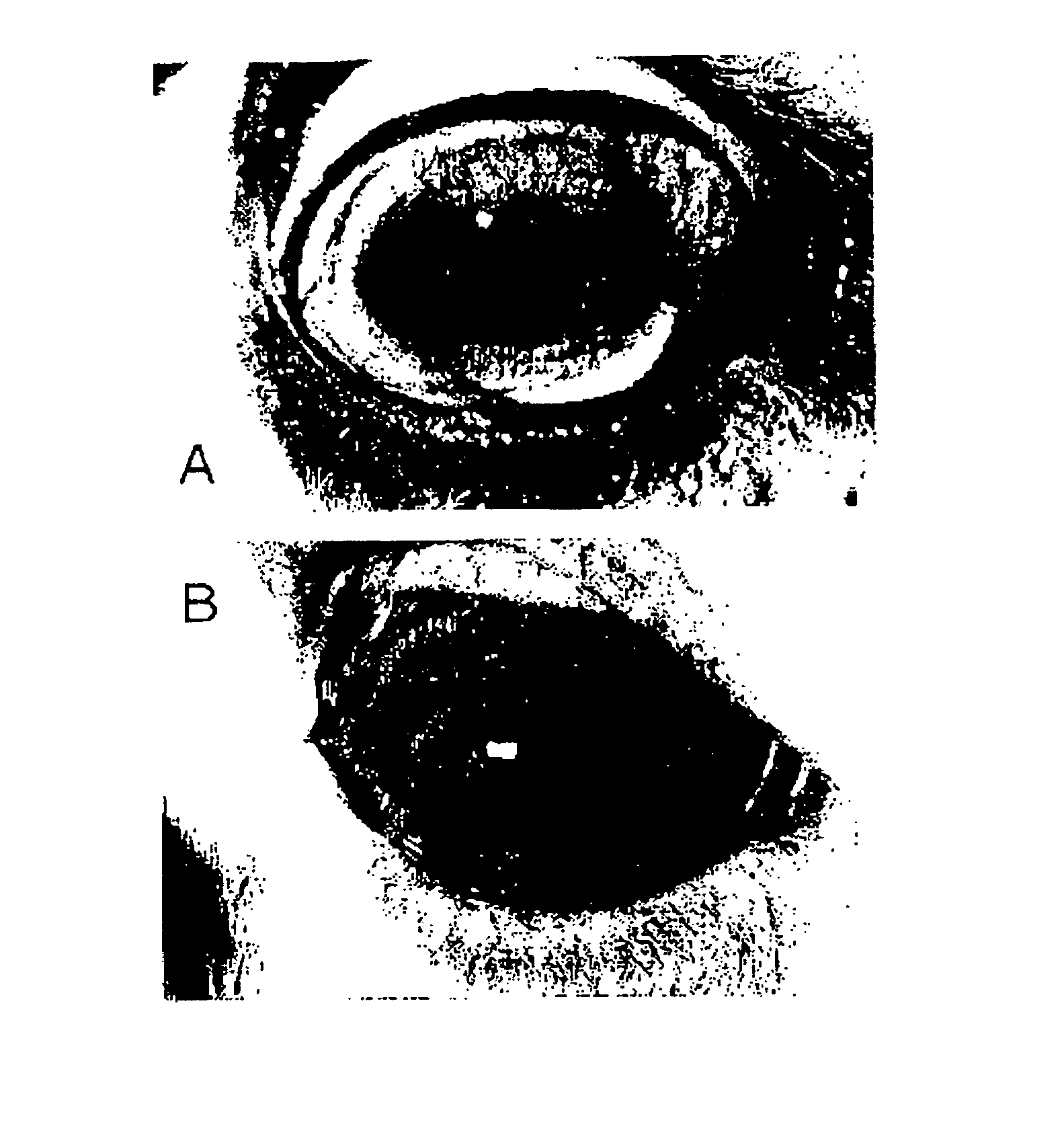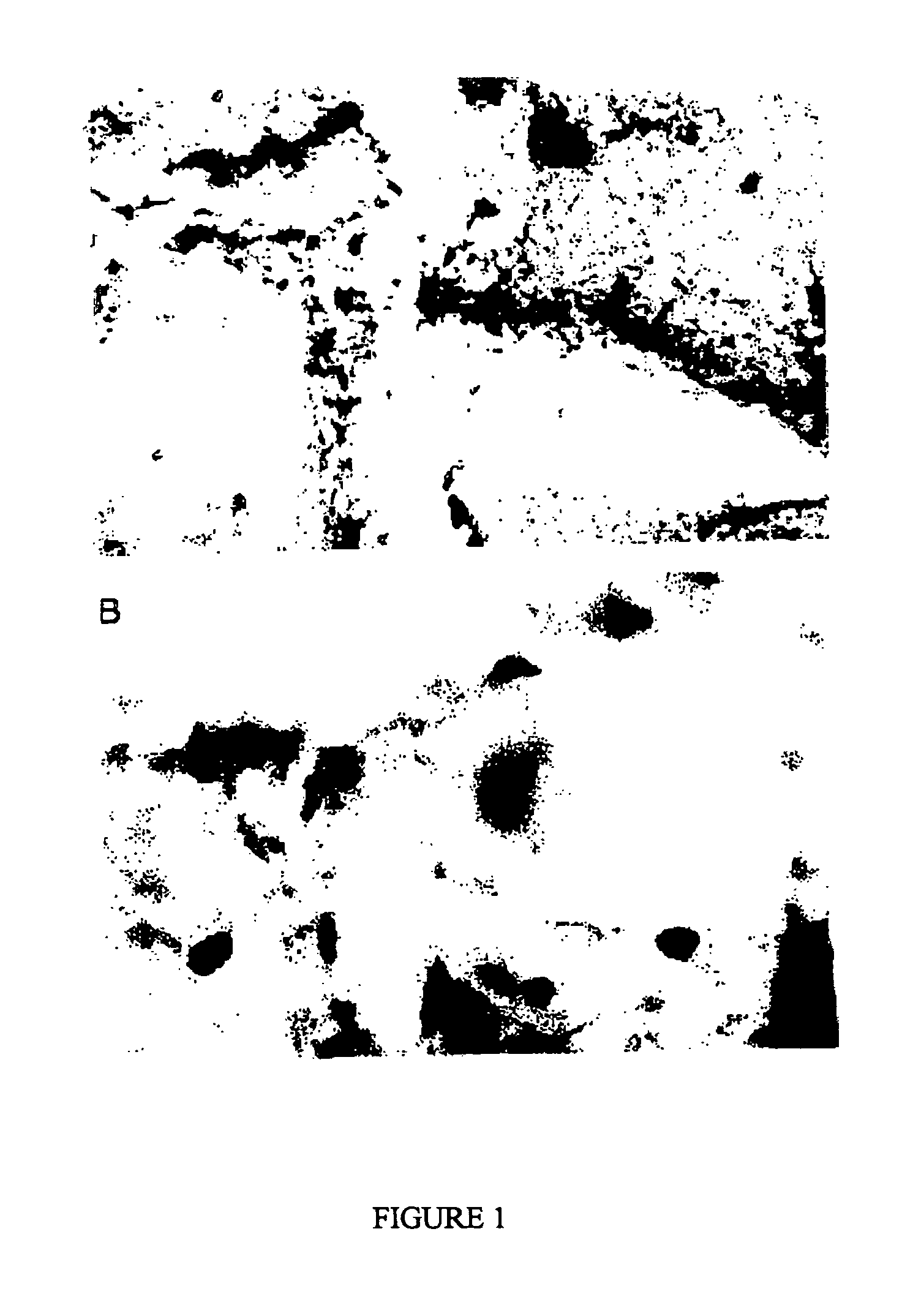Ocular Tissue Modification
a technology of ocular tissue and ocular artery, which is applied in the field of tissue modification, can solve the problems of tissue rejection, adversely affecting or eliminating vision, and damage to the monolayer during graft rejection, and achieves the effect of prolonging the survival of the graft and improving the healing of the ocular artery
- Summary
- Abstract
- Description
- Claims
- Application Information
AI Technical Summary
Benefits of technology
Problems solved by technology
Method used
Image
Examples
example 1
Transplantation in the Outbred Sheep of Corneal Tissue Modified by Gene Therapy Using Various Expression Vectors to Produce the Immunomodulatory Cytokine IL-10
[0057] The inventors selected a model of orthotopic corneal transplantation in the outbred sheep, a relevant preclinical model in which unmodified corneal allografts undergo rejection at three weeks post-operatively in a manner that is very similar at a clinical level to human corneal graft rejection (9). Adenoviral vectors have already been shown to be capable of transferring reporter genes into corneal endothelium of various species (10-13) and the use of liposomal agents has also previously been explored (14, 15). Given that the mitotic potential of sheep corneal endothelium was unknown, the replicative capacity of this tissue was first examined, to allow an informed choice of the vector for gene therapy to be made. The immunomodulatory cytokine, IL-10, which down-regulates cell-mediated immune responses under some circums...
example 2
Prolongation of Rat Corneal Allograft Survival by Gene Transfer-Mediated Intraocular Expression of Anti-CD28
[0083] Corneal transplantation is a well-accepted treatment for sight-threatening corneal opacification, but some grafts fail. The main cause of corneal graft failure is irreversible rejection, a T cell-dependent process.
Aim
[0084] To determine whether gene transfer of cDNAs encoding engineered antibody fragments reactive with T cell costimulatory molecules to donor corneas will prolong rat corneal allograft survival.
Methods
[0085] Replication-deficient adenoviruses encoding the green fluorescent protein (eGFP) reporter gene and secretory single-chain variable-domain antibody fragments (scFv) against rat CD4 (Ad-CD4) or rat CD28 (Ad-CD28) were constructed and characterised. Adenovirus-infected corneas were examined by reverse transcription-PCR to detect expression of specific mRNAs and by fluorescence microscopy to detect expression of eGFP. Functional scFv proteins were ...
PUM
| Property | Measurement | Unit |
|---|---|---|
| total volume | aaaaa | aaaaa |
| total volume | aaaaa | aaaaa |
| infection time | aaaaa | aaaaa |
Abstract
Description
Claims
Application Information
 Login to View More
Login to View More - R&D
- Intellectual Property
- Life Sciences
- Materials
- Tech Scout
- Unparalleled Data Quality
- Higher Quality Content
- 60% Fewer Hallucinations
Browse by: Latest US Patents, China's latest patents, Technical Efficacy Thesaurus, Application Domain, Technology Topic, Popular Technical Reports.
© 2025 PatSnap. All rights reserved.Legal|Privacy policy|Modern Slavery Act Transparency Statement|Sitemap|About US| Contact US: help@patsnap.com



